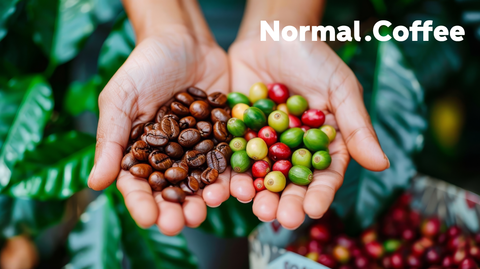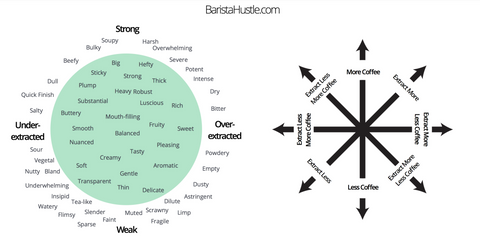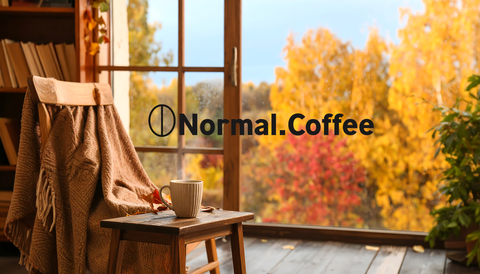Did you know coffee starts its journey as a humble evergreen shrub (or sometimes a small tree)? These plants are happiest in steady, moderate temperatures—which is why they thrive in the warm, cozy embrace of tropical and subtropical climates. In fact, the regions where coffee grows best form a special zone around the globe nicknamed the “Bean Belt.” This belt stretches across the Earth between the Tropics of Cancer and Capricorn, circling right around the equator.
Because of this, coffee beans are harvested from a wide variety of places—think Central and South America, Africa, the Middle East, and Asia. Together, they create a global community of growers and drinkers!
What makes it even cooler is that the soil, altitude, and climate in each region give rise to different varieties of beans—like Arabica, Robusta, Liberica, and Excelsa. Each one has its own personality and flavor quirks, shaped by the unique corner of the world it comes from.

When it comes to the coffee world, there are four main bean celebrities that make up the commercial market: Arabica, Robusta, Liberica, and Excelsa. Of these, Arabica and Robusta tend to hog the spotlight, showing up in most of the coffee we sip every day. Liberica and Excelsa, on the other hand, are like the hidden gems—less common but loved by those who seek out something unique.
What’s fascinating is that each bean type is linked to specific plant varieties and the regions they grow in. And here’s the kicker: within these four main types, there are over 120 subvarieties! That means a whole universe of flavor possibilities is waiting to be explored—whether you’re chasing bright, fruity notes, bold bitterness, or something wonderfully unexpected.
 Let’s break each type of bean down.
Let’s break each type of bean down.
Arabica beans are the most well-known and consumed beans, occupying about 60-70% of the commercial market. They are believed to have originated in the mountains of Ethiopia although they are now cultivated in 50 countries worldwide. They grow at high altitudes, usually under the cover of taller trees. These plants tend to be delicate, need constant tending and grow slower than their Robusta counterpart. Their flavor profile tends to be more complex, smoother and sweeter with floral and fruity aromatics and a higher acidity level than Robusta.
Robusta is a relative of the Arabica bean also thought to have originated in sub-Saharan Africa making them a heartier plant than Arabica and produce larger quantities of beans. These beans occupy 30-40% of the commercial market and are now mostly grown in Vietnam, India and Indonesia at lower altitudes with higher humidity. Because of their origin, they can withstand harsher and more diverse conditions making this plant is heartier and cheaper to produce. These beans offer a bolder, stronger brew with more earthy or nutty flavor notes with twice the caffeine of Arabica. It has a more bitter flavor profile, which is why you’ll see it used more so in blends and instant coffee than as a single origin roast. It’s also used in espresso and high caffeine blends and is a great base for lattes and cappuccinos.
 Liberica beans originated in Liberia but are cultivated in present day in small amounts almost exclusively in Southeast Asia, accounting for less than 1% of coffee production. Coffee producers don’t really produce this bean any longer globally and it’s rarely found outside of Asia. Liberica beans are twice as large as its counterparts and have a more complex floral, smoky, tobacco-like flavor profile.
Liberica beans originated in Liberia but are cultivated in present day in small amounts almost exclusively in Southeast Asia, accounting for less than 1% of coffee production. Coffee producers don’t really produce this bean any longer globally and it’s rarely found outside of Asia. Liberica beans are twice as large as its counterparts and have a more complex floral, smoky, tobacco-like flavor profile.
Excelsa beans are considered part of the Liberica family although it produces a much smaller sized bean. Like Liberica, it is produced mostly in Southeast Asia which also accounts for less than 1% of coffee production in the commercial market. The flavor is likened to Liberica but with more fruity than floral notes. It lends itself to both light and dark roast profiles and can be enjoyed neat (aka black), or with cream and sugar being a versatile choice.
Once beans are harvested, they must be roasted before we can create our favorite brews. The level to which the beans are roasted affects the flavor, acid level and aroma of the brew. There are 4 different types of roasts, each having their own best brewing technique.
Light roast beans are the lightest in color with no surface oils. These beans retain their acidity and brightness and reflect their origin’s flavor which makes this roast a great choice when buying single-origin beans. You’ll be better able to taste the uniqueness of the beans this way. They usually offer a more mellow flavor overall highlighting fruity and earthy notes. This roasting method involves lower temps and short roast times which helps the beans retain a flavor more like a raw green coffee bean. You’ll get a little more caffeine from a light roast bean than medium or dark.
Medium roast beans will be a bit darker than light roast and have some oil on the surface. Slightly higher temperatures and roast times distinguish this roast level resulting in a sweeter, bolder bodied brew with lower acidity than light beans. They deliver a more intense brew than a light roast with a flavor profile often described as chocolatey or nutty. Medium roast is by far the more popular roast commercially because it offers a complex taste without being overwhelming with acidity or burnt or bitter aftertaste. As the name implies, it sits somewhere in the middle of the flavor experience.
Dark roast beans present very dark brown or black with a nice sheen of oil on its surface. Longer roasting times at higher temps result in a bean that produces a more intense, bolder brew that leans toward smoky, nutty or bittersweet flavor-profiles (like the good type of bitterness found in dark chocolate) leaving behind their origin flavor. A good dark roast will avoid leaving a burnt or bitter aftertaste. Dark roasts are more popular in European countries because of their bold flavor profile and they lend well to their traditional brewing methods. Although bold and complex, these beans offer less caffeine than both light and medium roast.
With some experimenting and taste testing, you’ll begin to recognize the individual characteristics of each type of roast, eventually landing on what makes your senses the happiest.
There are two choices when buying coffee: whole bean or ground. Whole bean coffee delivers the bean to you in its purest original form. Generally, whole beans are roasted, cooled, bagged and shipped directly from the roaster. Whereas ground coffee is the whole bean ground down into fine pieces that are ready for brewing directly from the package. Instead of coming directly from the roaster, they are sometimes sent elsewhere for grinding and bagging which prolongs their delivery to the consumer. The longer coffee goes unused, the less fresh it will be at the time of consumption.
Both formats result in a flavorful cup of coffee, but each choice comes with pros and cons. Often, consumers base their choice on convenience, freshness, and outcome. Key factors to consider when making your purchase include grinding, brew time, storage, flavor. Let’s examine each to help us better understand which option is the right one for you!
Grind: Whole bean coffee cannot be consumed without being ground. So, in addition to purchasing the beans, you’ll have to make an investment in a grinder. Depending on how serious a coffee connoisseur you are, this can be a minimal to expensive investment. Take into consideration that whole beans usually are a bit less expensive, so you can write off this cost over time. Although grinding beans yourself creates extra step making it less convenient, it does yield fresher, more flavorful cup of coffee because grinding releases its natural oils and flavors. Another advantage is that you have more control over the grind size meaning you can adjust the grind to better suit your brew method. When purchasing ground coffee, you will still have options from course to fine grounds but may have limited options depending on the brand of coffee you like.
Brew Time: This is a minor consideration as using whole beans and having to grind them does take more time but is realistically minimal in the scheme of things. You’ll measure the amount of beans you need and grind only what you’ll use for that brew. Buying ground coffee allows you to measure from the start.
Storage: Both ground and whole bean coffee should be stored in an airtight container in a dark, cool environment to keep the coffee in its freshest form. Avoid using the fridge or freezer to store your coffee as the beans can absorb moisture and odors in that environment and the cold temps can affect the oils in the coffee lessening its flavor once brewed. Making sure the container has a seal to keep it airtight is important as once oxygen makes contact with the coffee, it starts to deteriorate in quality. Whole beans are much less affected by air exposure because there is much less exposed surface area. What this means overall is that whole bean coffee will stay fresh longer yielding a more flavorful brew. Ground coffee tends to get stale and taste flat over time.
Flavor: As we’ve already hinted to how the timing of the grind can affect the outcome of your brew. Preground coffee will not yield as robust a roast as a fresh ground whole bean option does for a couple of reasons. When you grind your own beans, it releases the oils and aromas the bean contains which adds to the success of the brew. The longer a bean has been in its ground form, the more time the oils and flavors have had to dissipate and lessen.
Although seemingly simple, these considerations can help lead you to your perfect cup of coffee. With slight adjustments you can curate the flavor, depth and boldness that best suits you.
Now that you’re armed with the coffee basics, it’s time to dive into the fun part—tasting and experimenting! From different brands to unique roasts and brewing methods, the possibilities are practically endless. Chances are, you’ll discover more than one way to enjoy your daily cup.
At Normal Coffee, we keep things simple yet satisfying with our mild, smooth flavor profile available in light, medium, and dark roast options. Not sure which roast might be your perfect match? We’re always happy to help you choose.
So go ahead—start your coffee adventure today. Because the best cup of coffee isn’t just the one in your hand, it’s the journey you take to find it.



